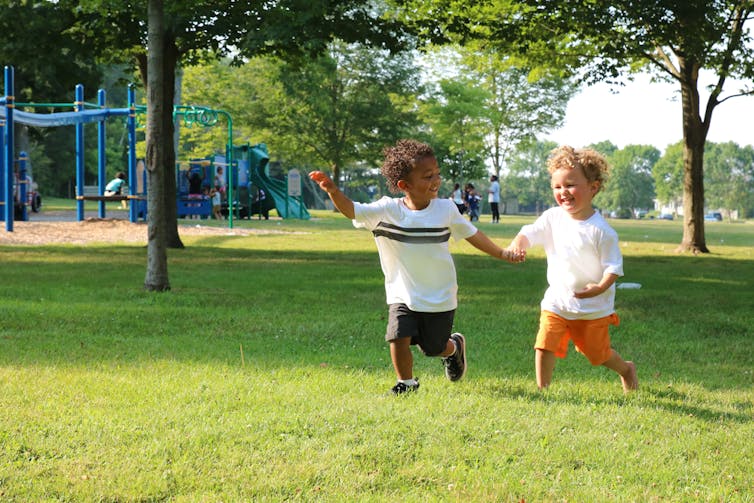Poor mental health among young people is on the rise in the UK, while access to support and treatment remains patchy. There is now a pressing need to build resilience in young people to minimise their risk of poor mental health later on, as our latest report argues.
There are 12.5m young people in England, and one in ten will experience poor mental health. Half of all lifelong mental health problems start before the age of 14, but only one in four young people uses mental health services. An extra 23,800 staff, at a cost of £1.77 billion, is needed so that every young person who needs mental health support can get it. In the short term, though, this is unrealistic.
Treatment gap: resilience in childhood
To address this treatment gap, we need to invest in building young people’s resilience in order to minimise their risk of developing poor mental health in the first place. A recent study from Wales showed that people with high resilience in childhood are less than half as likely to develop a mental health condition, compared with those who have low resilience in childhood. The early years, before the age of 18, are the best time to build resilience as it provides lifelong mental health benefits.
Resilience is the ability to deal with life’s challenges and stresses in a healthy and positive way. This involves drawing on personal resources, such as the ability to manage anxiety and negative thoughts, as well as social resources, such as having positive relationships with family, friends and adults, including teachers.
Social and economic circumstances also affect a child’s ability to develop resilience. Children from low-income families are much more likely to experience poor mental health, compared with children from high-income families.

Olga Enger/Shutterstock.com
Two-pronged approach to improving resilience in childhood
Preventing poor mental health in childhood and in later life needs a two-pronged approach. First, parents need support so they can provide a secure home for their children. Alongside this, parents, schools and youth organisations need to help children develop positive relationships and teach them how to deal with relationship problems and other difficulties in life.
Second, we need to minimise the risk to children’s mental health. These risks include all forms of abuse, poverty and other negative experiences during childhood, such as being bullied. Positive relationships with family members, friends, teachers and other adults can act as a buffer against these negative experiences.
Investing in prevention would save the government, the NHS, education, the criminal justice system and employers money in the long run, so investing in the resilience of children should be everybody’s business.
While there have been repeated calls for action over the past ten years, progress has been sluggish. Many areas lack a strategy, and investment in preventative activity is often short term.
Planning for a resilient generation requires public health to work with health, education, parents, young people and other partners. Together they need to identify the actions they can take for the whole population as well as for those groups that are particularly at risk. And they will need to prioritise what to invest in. There is good evidence for specific interventions that will improve mental health and deliver an early payback on the investment. For example, providing social and emotional learning in schools can achieve a saving of £5 for every £1 invested over a three-year period.
Local government also needs to take action to ensure that vulnerable families and young people have a secure income, housing and access to health, education and employment. This includes a concerted effort to reduce the harm caused by negative childhood experiences, such as abuse, and by focusing on young people who are particularly at risk of poor mental health, as is the case with young people who have been in care.
Even with a robust resilience programme, there will always be young people who experience poor mental health, so it’s still important to respond quickly to the first signs of distress. This has implications for all of us in knowing how to respond well and how to access the right support.
One-stop service
Mental health services for young people have long waiting lists and we need to develop accessible and friendly one-stop-shop services that can better meet their needs, such as the Australian organisation, Headspace, a national youth mental health service, designed with input from young people.
Building resilience, minimising risks to mental health and ensuring effective support is available has the potential to halve the number of children experiencing poor mental health within a generation. The benefits of this will be realised not only by young people and their families but also by wider society and the economy.
Investing in the resilience of young people is everybody’s business. It is time for the hand-wringing about the poor mental health of children and young people to stop and for action to be taken. A first step is for investment in the resilience of children and young people to be a clear priority for government and public services.
Karen Newbigging, Senior Lecturer, University of Birmingham
This article was originally published on The Conversation. Read the original article.

